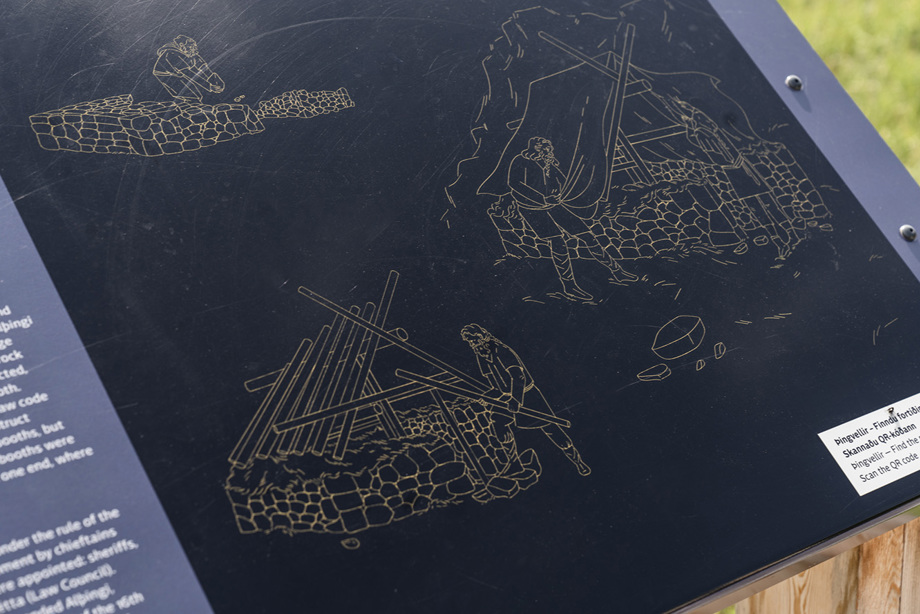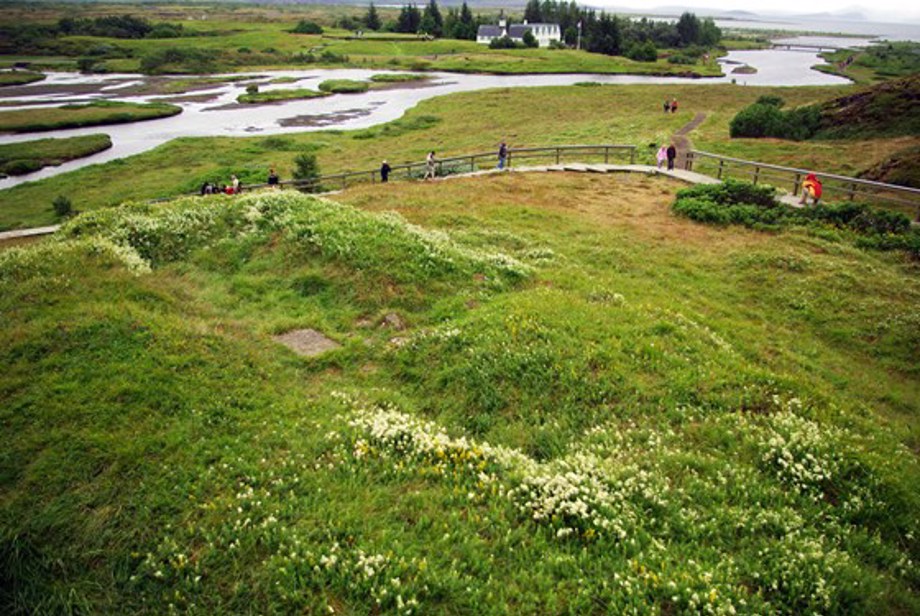A crowded assembly
For two weeks each summer, Icelanders from all parts of the country gathered at Þingvellir. A common Icelandic phrase, "nú er þröng á þingi", literally means: "now it is crowded at the assembly", and this can probably be traced back to the commonwealth era, when the assembly was well attended during its peak.
According to statistics left to us by Bishop Gissur Ísleifsson, farmers at the Alþingi numbered around 4000 at the end of the 11th century. Since one in every nine farmers had to accompany his chieftain to the Alþing, this meant that up to 500 farmers were required to go with their chieftains to the general assembly at that time.

Multiple booths at Þingvellir are still visible and serve as a reminder of the old assembly. On the Búðaslóð (Booth trail) visitors can explore some of them and read about their owners.
Þingvellir National Park
The journey
Those who attended took on difficult journeys to get to the Alþing each summer. Some only had to ride for a day or two, but for others it took more than two weeks to journey over the mountains and desert sands of the Icelandic highlands. Þingvellir was conveniently situated on ancient travel routes and was hardly a day's journey on horseback from the main districts of south and west Iceland.
Fairly easy routes could be taken from the most densely populated districts of north Iceland. People from northeast and east Iceland could cross the highlands, but Þingvellir took 17 days to reach from the farthest flung parts of east Iceland, largely skirting the mountains.
A place of business and socializing
In the Commonwealth era, it wasn't only those who had legal errands for the Alþing who made their way there. In the old law book Grágás, mention is made of tanners' and peat-cutters' booths, while in many Icelandic sagas, reference is made to beer-brewers and food sellers. Merchants, sword-sharpeners and tanners would sell their goods and services, clowns performed and ale-makers brewed drinks for the assembly guests.
During the days that the Alþing was held, it was the centre of social life and a kind of capital of the country that the public visited. Labourers and traders, both Icelandic and foreign, went there, along with delegates of foreign heads of state, people in search of work, and beggars looking for alms. It's not an overstatement to say that the foundation of the Icelandic national culture, language, and literature was laid at Þingvellir.

Next to Lögberg is one of the larger booths in the park, Snorrabúð. It might have originally belonged to Snorri goði, a chieftain mentioned in several Icelandic sagas, and then later used by his descendant, the more famous Snorri Sturluson, who would go on to serve as a law-speaker and record norse mythology in the Snorra-Edda.
Þingvellir National Park
Booths
While at the assembly, people would erect temporary living spaces called booths.
Walls were made of turf and boulders, over which a wooden frame was erected that was covered with twill or other material. Booths were generally constructed on the base of previous ones, and so most of the enclosure relics seen at the assembly site date from the last two centuries of the assembly. It's thought that the booths built during the Commonwealth were larger than those erected later on.
Today, grass-covered relics of booths spread over the assembly site are the only existing remnants of nearly 900 years of the history of the Alþing.